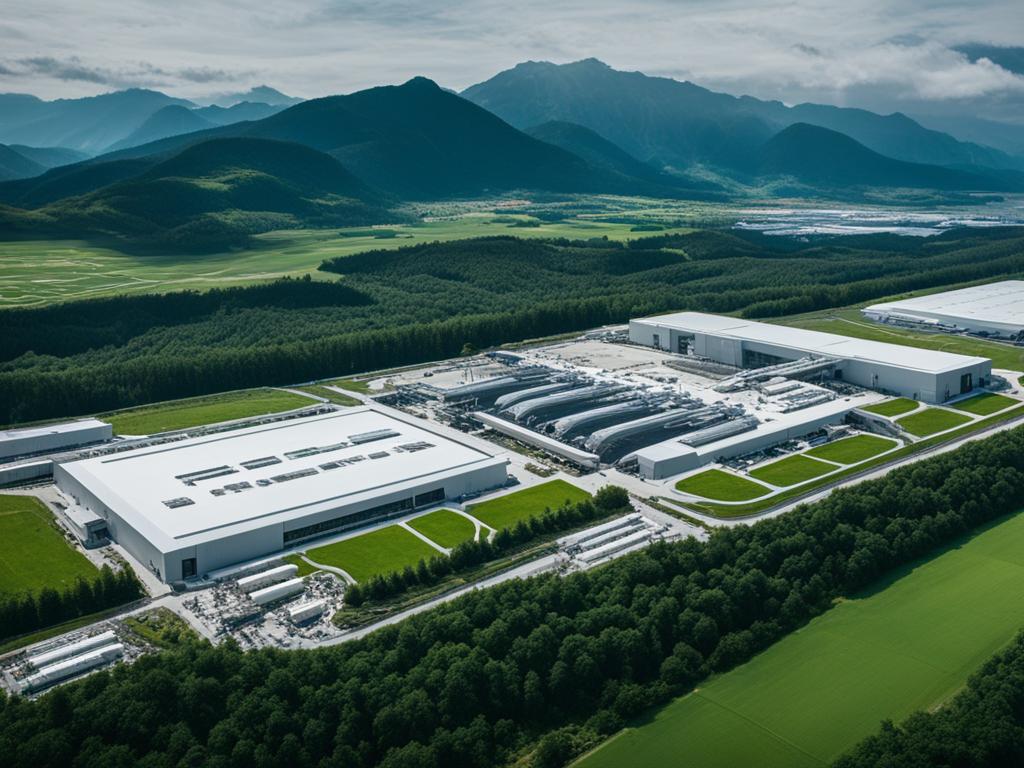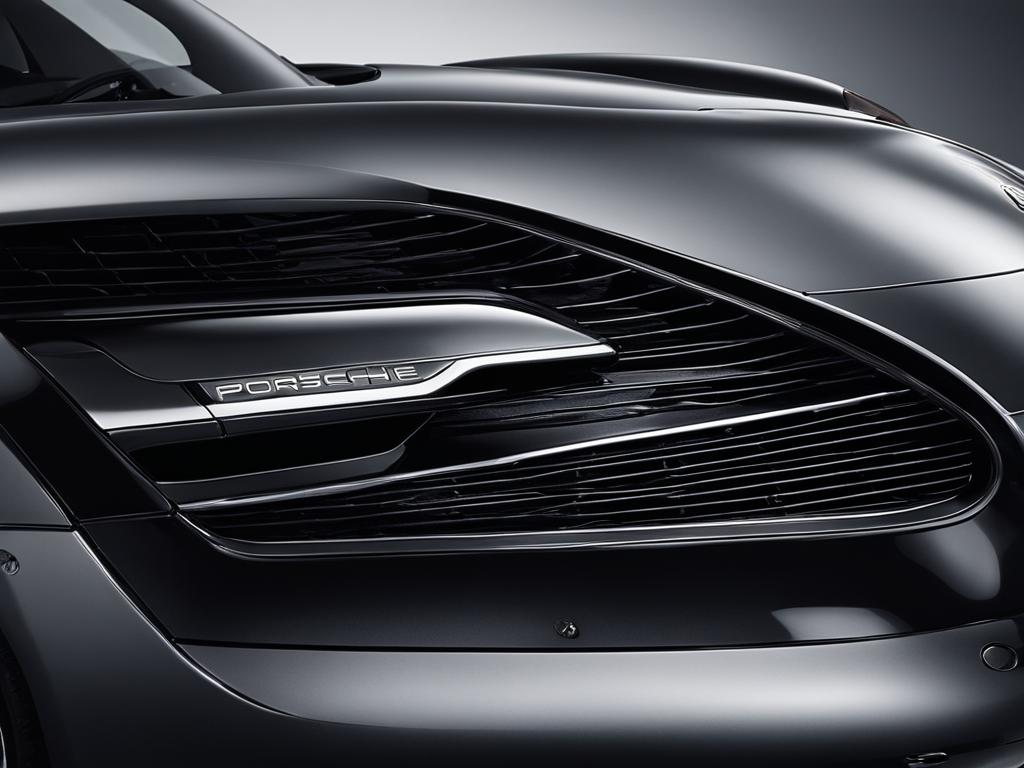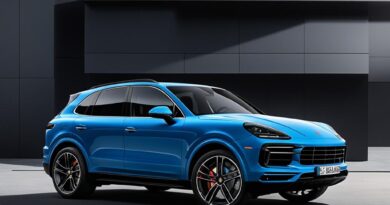Discover Where is Porsche Made – Origin Unveiled
Porsche, the renowned automobile manufacturer, has its origins in Germany, specifically in Stuttgart, Baden-Württemberg. Founded in 1931 by Ferdinand Porsche, the company has since become renowned for its high-performance sports cars, SUVs, and sedans.
The first Porsche ever made, the Porsche 64, was built in 1939 for a road race organized by Hitler’s regime. However, the official production of Porsche cars began in 1948 with the introduction of the Porsche 356, which was manufactured in Gmünd, Austria. Today, Porsche cars are predominantly made in Germany, with the main production facilities located in Stuttgart and Leipzig.
Key Takeaways:
- Porsche has its origins in Germany
- Ferdinand Porsche founded the company in 1931
- The first Porsche, the Porsche 64, was built in 1939
- Official production of Porsche cars started in 1948 with the Porsche 356
- Germany is the main country where Porsche cars are produced
Ferdinand Porsche – Founder and Innovator
Ferdinand Porsche, a legendary German automotive engineer, is widely recognized as the founder of Porsche AG and the mastermind behind numerous groundbreaking innovations. His visionary contributions have left an indelible mark on the automotive industry.
Porsche’s legacy includes the design of the iconic Volkswagen Beetle, a vehicle that has become an enduring symbol of German engineering excellence and automotive history. In the 1930s, Porsche was commissioned by Adolf Hitler’s regime to create the KdF-Wagen, which would later evolve into the beloved Beetle. Despite the controversial context in which the Beetle originated, its timeless design and mass appeal solidified Porsche’s reputation as a masterful automotive designer.
Ferdinand Porsche’s influence extends far beyond the design of the Beetle. His genius paved the way for the establishment of Porsche AG in 1948, under the leadership of his son, Ferry Porsche. This marked the beginning of an extraordinary journey that would transform Porsche into a global automotive empire.
“The design of a motor car which is markedly distinguished from previous types, cannot fail to give rise to many controversies. To provide more original and maximum driving pleasure, I therefore decided to construct a sports car as well.” – Ferdinand Porsche
The birth of Porsche AG heralded the introduction of the Porsche 356, a pioneering sports car that encapsulated the brand’s commitment to performance, craftsmanship, and innovation. This milestone vehicle laid the foundation for the exceptional lineup of Porsche cars that would soon follow.
Continuing the Legacy
Porsche AG, with Ferdinand Porsche’s spirit driving it forward, continued to push the boundaries of automotive engineering. Today, the company boasts an impressive range of models, from the timeless Porsche 911 to the cutting-edge electric vehicle, the Porsche Taycan.
Under the stewardship of the Porsche family and subsequent generations of dedicated engineers, Porsche AG remains at the forefront of technological advancements and design excellence. The brand’s unwavering commitment to delivering unparalleled driving experiences has solidified its position as a revered global luxury automotive manufacturer.
Evolution of the Porsche Brand and Models
The Porsche brand has a rich history of pioneering design and engineering. One of the most significant milestones in Porsche’s history was the introduction of the Porsche 356 in 1948. This was the first production car to bear the Porsche name, laying the foundation for the brand’s future success. The Porsche 356 quickly became synonymous with sportiness and performance, captivating automotive enthusiasts around the world.
In 1964, Porsche launched the iconic Porsche 911, which solidified the brand’s reputation for producing high-performance sports cars. The Porsche 911 has since become a legendary model, known for its timeless design, exhilarating performance, and signature rear-engine layout. It has evolved over the years to incorporate cutting-edge technologies while remaining true to its iconic heritage.
As Porsche continued to innovate, new models were introduced to cater to a wider range of customers. The Porsche car lineup expanded to include models such as the Cayenne, Macan, Panamera, and Taycan. These models combine Porsche’s renowned engineering prowess with elements of luxury, comfort, and sustainability, reaffirming the brand’s commitment to evolving with the times.
The Porsche 911 and Porsche 356 remain as cornerstones of the brand, representing the past and the present, respectively. The 911’s unmistakable silhouette and thrilling performance continue to capture the hearts of sports car enthusiasts worldwide. The 356, on the other hand, serves as a testament to Porsche’s heritage and the foundation on which the brand was built.
Evolution of Porsche Car Models
| Model | Year Introduced | Main Features |
|---|---|---|
| Porsche 356 | 1948 | Sportiness and performance |
| Porsche 911 | 1964 | Iconic design and high-performance |
| Porsche Cayenne | 2002 | Sporty SUV with luxurious features |
| Porsche Macan | 2014 | Compact SUV offering exhilarating performance |
| Porsche Panamera | 2009 | Sports sedan with refined luxury and spaciousness |
| Porsche Taycan | 2019 | Elegant electric sports car |
Each Porsche model showcases the brand’s commitment to performance, craftsmanship, and innovation. Whether it’s the timeless allure of the Porsche 911 or the electrifying presence of the Taycan, Porsche continues to push boundaries and captivate automotive enthusiasts with its exceptional cars.
“Porsche models are not just vehicles; they are an embodiment of passion, engineering excellence, and driving pleasure.” – Porsche enthusiast
Porsche Manufacturing Process and Locations
Porsche follows a meticulous manufacturing process to ensure the highest quality and performance in its vehicles. The manufacturing process involves various stages, including body construction, painting, assembly, and quality control. Let’s take a closer look at each step:
1. Body Construction
At the beginning of the manufacturing process, the bodies of Porsche vehicles are constructed using advanced techniques and materials. The use of lightweight yet durable materials, such as aluminum and carbon fiber, helps enhance performance and fuel efficiency.
2. Painting
After the body construction, the vehicles go through a sophisticated painting process. Highly skilled technicians meticulously apply multiple layers of paint, ensuring a flawless finish. This meticulous attention to detail not only enhances the aesthetics but also provides protection against corrosion and other environmental factors.
3. Assembly
During the assembly process, various components, including the engine, suspension, and interior features, are carefully installed. Highly skilled technicians with extensive knowledge of Porsche’s engineering specifications carry out this process to ensure every component is precisely fitted.
4. Quality Control
Once the vehicles are assembled, a rigorous quality control process takes place. Each vehicle undergoes comprehensive testing to ensure it meets Porsche’s stringent standards for performance, safety, and reliability. This includes extensive inspection and testing of all components, systems, and functionalities.
Porsche’s dedication to quality extends beyond the manufacturing process. The brand has established state-of-the-art manufacturing plants in strategic locations to ensure efficiency and meet global demand. Here are the main production facilities:
| Production Location | Main Models |
|---|---|
| Stuttgart, Germany | Porsche 911, Porsche Taycan, Porsche Panamera |
| Leipzig, Germany | Porsche Cayenne, Porsche Macan |
These manufacturing plants combine advanced technologies, highly skilled workers, and meticulous craftsmanship to create each Porsche vehicle. The attention to detail and quality control at every stage of the manufacturing process ensures that every Porsche that rolls off the production line provides an exceptional driving experience.

Global Reach and Expansion of Porsche
Porsche, a renowned automobile manufacturer, has a strong global presence, with its vehicles being sold and enjoyed in countries around the world. While Porsche’s main production facilities are located in Germany, the company has strategically expanded its production sites to meet the increasing demand for its vehicles.
One of the notable production facilities is Werk 2, located in Zuffenhausen, Germany. This facility specializes in the production of steel bodies for Porsche models, contributing to the exceptional quality and durability for which Porsche vehicles are known.
Moreover, Porsche has strategically established production sites in other countries to cater to local markets and enhance its global manufacturing capabilities. For example, Slovakia is home to a Porsche production site where the company manufactures the Cayenne model, addressing the demand in the European market.
In addition to Slovakia, Porsche has a strong manufacturing presence in China. The company’s production facility in China allows it to tap into one of the largest automotive markets in the world. This ensures that Porsche can meet the unique preferences and requirements of Chinese customers while strengthening its global reach.
By strategically diversifying its production sites, Porsche can not only cater to regional needs but also ensure efficient production and timely delivery to customers worldwide. This global reach and expansion are crucial for Porsche to maintain its position as a leading luxury automotive brand.
| Production Site | Location | Models Produced |
|---|---|---|
| Werk 2 | Zuffenhausen, Germany | Steel bodies for Porsche models |
| Slovakia | Slovakia | Porsche Cayenne |
| China | China | Various Porsche models |
Porsche’s Commitment to Quality and Craftsmanship
Porsche is a car manufacturer renowned for its unwavering commitment to quality and craftsmanship. From the moment a Porsche vehicle is conceived to the final stages of production, meticulous attention to detail is given to ensure that every Porsche meets the highest standards of excellence.
At Porsche’s manufacturing plants, highly skilled craftsmen work alongside cutting-edge technologies to create precision-engineered vehicles. The combination of traditional handcraftsmanship and advanced production processes results in cars that are not only visually stunning but also deliver exceptional performance on the road.
From the initial design phase, where every curve and contour is carefully considered, to the final assembly, where each component is meticulously fitted, Porsche’s dedication to quality shines through. The result is a driving experience like no other.
“Craftsmanship is in the DNA of every Porsche. We strive for perfection in every detail, no matter how small. It is this commitment that has solidified Porsche’s reputation as a leader in the automotive industry.”
Porsche’s unwavering commitment to quality extends beyond the manufacturing process. Each Porsche vehicle is subjected to rigorous quality control measures to ensure that it meets the brand’s exacting standards. From the engine performance to the interior finishes, every aspect of the car is thoroughly inspected and tested to guarantee customer satisfaction.
This dedication to quality and craftsmanship has earned Porsche a loyal customer base and a reputation for producing some of the finest sports cars in the world. Whether it’s a sleek 911 or a versatile Cayenne, every Porsche vehicle is a testament to the brand’s unwavering commitment to excellence.
The Porsche Manufacturing Process
The production of a Porsche vehicle involves several stages, each executed with precision and attention to detail. Here is an overview of the Porsche manufacturing process:
- Design: Porsche’s design team creates innovative and captivating designs that embody the brand’s values of performance and elegance.
- Body Construction: The body of a Porsche is constructed using advanced materials and techniques to ensure optimal strength, rigidity, and safety.
- Painting: The car undergoes a meticulous painting process that includes multiple layers of high-quality paint, resulting in a flawless finish.
- Assembly: Skilled technicians assemble the various components of the car, meticulously fitting each part to ensure precise alignment and functionality.
- Quality Control: Every Porsche vehicle undergoes extensive quality control checks to ensure that it meets the brand’s stringent standards before it leaves the factory.
This comprehensive manufacturing process guarantees that every Porsche vehicle that rolls off the production line is a testament to the brand’s commitment to quality and craftsmanship. It is this attention to detail that sets Porsche apart and makes every Porsche vehicle a work of art.

| Key Elements of Porsche Craftsmanship | Benefits |
|---|---|
| Attention to Detail | Ensures that every component of the car is crafted to perfection, providing an unmatched driving experience. |
| Precision Engineering | Results in vehicles that offer exceptional performance, handling, and reliability. |
| Use of High-Quality Materials | Contributes to the durability and longevity of Porsche vehicles. |
| Integration of Advanced Technologies | Delivers innovative features and cutting-edge performance. |
Conclusion
Porsche, with its rich history and unwavering commitment to innovation, has solidified its position as a leader in the automotive industry. From its humble beginnings in Germany to its global expansion, Porsche has consistently upheld its core values of performance, craftsmanship, and quality. Its iconic models, such as the Porsche 911, have not only become symbols of excellence but have also captured the hearts of car enthusiasts worldwide.
As Porsche continues to evolve and push the boundaries of automotive engineering, the legacy of Ferdinand Porsche lives on through every meticulously crafted vehicle. The company’s dedication to precision and attention to detail can be seen throughout its manufacturing process, carried out in state-of-the-art facilities in Stuttgart and Leipzig, Germany.
With an ever-expanding lineup of vehicles, Porsche caters to a wide range of customers and continues to captivate with its blend of cutting-edge technology and timeless design. Whether it’s the exhilarating speed of a sports car or the luxury of an SUV, Porsche vehicles deliver an unparalleled driving experience. As the brand looks to the future, it will undoubtedly leave an indelible mark on the automotive industry, continuing to set new standards and inspire innovation.
FAQ
Where is Porsche made?
Porsche cars are predominantly made in Germany, with the main production facilities located in Stuttgart and Leipzig.
What is the origin of Porsche cars?
Porsche has its origins in Germany, specifically in Stuttgart, Baden-Württemberg.
Where are the Porsche production locations?
Porsche production facilities are primarily located in Stuttgart and Leipzig, Germany.
What is the Porsche manufacturing process?
The Porsche manufacturing process involves stages like body construction, painting, assembly, and quality control.
Are there any other Porsche manufacturing plants?
Porsche also has a production facility in Zuffenhausen, Germany, known as Werk 2. Additionally, Porsche has production sites in other countries, such as Slovakia and China.
How does Porsche ensure quality in its vehicles?
Porsche takes pride in its meticulous attention to detail and employs highly skilled craftsmen and advanced technologies to ensure the highest standards of quality in its vehicles.
Where can I find Porsche’s assembly facilities?
Porsche’s main assembly facilities are located in Stuttgart and Leipzig, Germany.
What are the countries where Porsche cars are manufactured?
Porsche cars are primarily manufactured in Germany. However, Porsche also has production sites in other countries, such as Slovakia and China.
How many Porsche factories are there?
Porsche has several manufacturing plants and factories, with the main ones located in Stuttgart and Leipzig, Germany, and additional sites in Zuffenhausen, Slovakia, and China.
What is Porsche’s presence worldwide?
Porsche has a global presence, with its vehicles being sold and enjoyed in countries around the world.




